5 ways to create the ideal guest room
Interior designer Mary Graham shares the secret to creating a spare room in which your guests will feel at home.
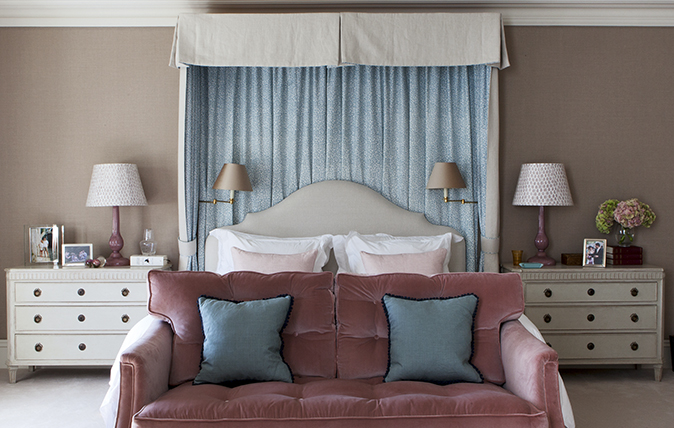

Having a room to which house guests feel they can retreat offers benefits for both parties – the trick is to create somewhere supremely comfortable, but which falls short of feeling like an anonymous hotel. Extra blankets, a bottle of water, a hairdryer and some bath oils are important, as are necessities such as USB-friendly sockets and an iPhone charger in a drawer.
The bed
We always specify a divan in our bedroom projects. Not only are they extremely comfortable, but the built-in storage is always useful, particularly when it comes to storing spare linen. A good tip for guest bedrooms is to invest in a good-quality mattress topper—we like The White Company’s, which is about 2in thick and really soft.
I’d definitely recommend a headboard as they give height—everything in a bedroom is low level and rather bottom heavy. It should be high enough so that you can lean back comfortably while reading a book, but we’re not fans of very over-sized designs as they can dominate the room. A half-tester provides a focal point as well as offering a relatively inexpensive way to add a little luxury.
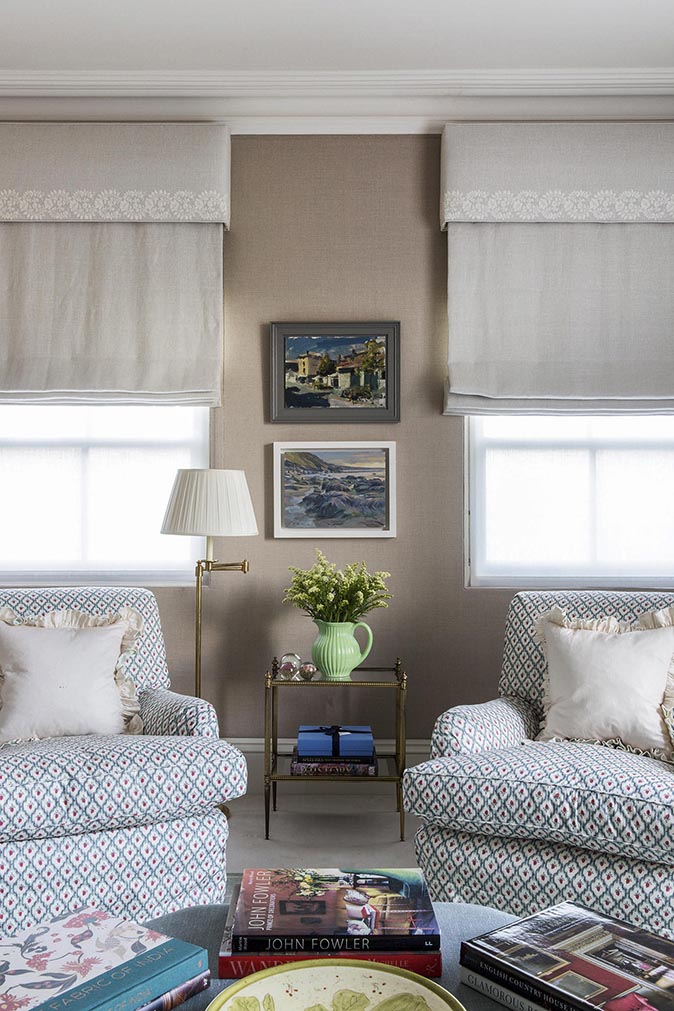
Curtain treatments
Here, we’ve used a combination of Roman blinds and curtains, each with a pelmet. In bedrooms, we always line curtains with blackout and fit a sheer roller or Roman blind for privacy. On the whole, we tend to encourage clients to be a bit braver when choosing fabrics for spare bedrooms – as you’re not having to live with them every day, you can afford to add some ‘wow’ factor – but, in this room, the clients wanted to create a soothing retreat, so we’ve used a palette of muted pinks and beiges.
As a result, we’ve focused on creating interest out of details such as the subtle ivory- coloured embroidery on the pelmets and down the leading edge of the curtains, which are in a lovely linen by Victoria Bain that contrasts well with the raspberry-pink velvet on the sofa. The interior of the half-tester is a bespoke fabric by Bernard Thorp.
The window sizes presented something of a challenge in this room; at one end are French windows leading out to a balcony, but the standard windows are rather low and small. To counterbalance this, we’ve hung the pelmet and blind for the small window at ceiling height to cover what’s called the ‘dead light’ – that is, the wall between the top of the window and the ceiling. It’s a good technique to give the impression that the windows are larger and grander.
Walls
Fabric brings a softness to the bedroom and acts as a good sound absorber, which is especially important in a spare bedroom, so guests feel as if they have a bit of privacy. Here, we’ve used a plain, double-width linen (good for walls as there are fewer seams) by Hesse & Company and trimmed it with double piping around the edge of the room.
Sign up for the Country Life Newsletter
Exquisite houses, the beauty of Nature, and how to get the most from your life, straight to your inbox.
Lighting
Another element we like to introduce is to have a pair of really beautiful lamps. Here, we’ve used two hand-blown crystal table lamps by Lucy Cope with shades by OKA. We like to use gathered lampshades as they’re soft and pretty and you can experiment by using interesting fabrics.
Reading lights can be set within the half-tester. Vaughan has a good range of library lights on swing arms; I like brass in bedrooms as it’s warmer than chrome. Bedroom lights should be on a three-amp or five-amp circuit so that they can be switched on and off from both sides of the bed – here, it’s possible to pass your hand through a gap in the curtain to reach the switch. They should also be dimmable. Forbes & Lomax has some really good-looking light switches – its Perspex backplates are especially good if you’re using wallpaper; for fabric walls, such as these, we’d go for a dolly switch.
On the whole, we’d avoid using downlights in a spare bedroom – you should have enough lighting layers from the table lamps, picture lights (a good trick and often forgotten about as a lighting option in a bedroom) and perhaps a standard lamp in a corner.
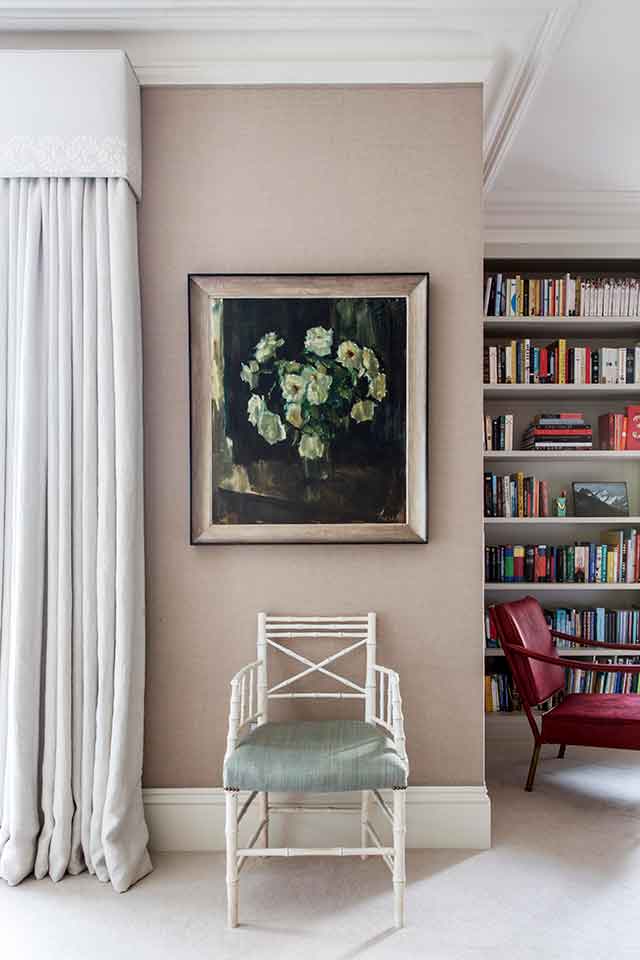
Storage
On either side of this bed are two really large chests of drawers from Chelsea Textiles that are ideal for rooms in which storage is limited. With bedside furniture, I recommend going as big as the room will allow as it affords more room for a lamp, books and a carafe of water – often, these are a tight squeeze on smaller bedside tables.
Bookshelves in bedrooms add both character and colour and are a nice way of providing a cosy corner – especially in this room, which is large, so we wanted to make it feel a bit smaller and more intimate. The walls of bedrooms can often be quite bland, so adding joinery adds atmosphere (as well as being a clever way of disguising any boxed-in piping).
Here, we’ve put library lights on either side of the bookcase and created a window seat, which is a good place to keep spare blankets. What’s also lovely for a spare bedroom is to put something at the end of the bed – a sofa, a stool or an antique wooden luggage rack – which provides a place to unpack.
As wardrobe space isn’t so critical in a guest bedroom, we like to use antique linen presses that have hanging space at the top and drawers below. For a country bedroom, a gathered fabric behind chicken wire softens the room. I’d look either at Brownrigg or David Bedale, but for an alternative, again for a spare room that doesn’t require a piece with lots of provenance, then have a look on www.sellingantiques.co.uk
(www.salvesengraham.com; 020–7967 7777)
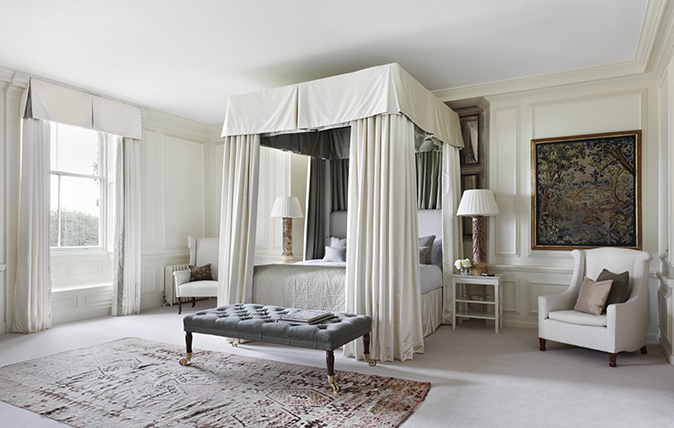
The four-poster bed revival (and the best beds to create that indulgent atmosphere)
The four-poster is being reinvented for the 21st century, says Amelia Thorpe.
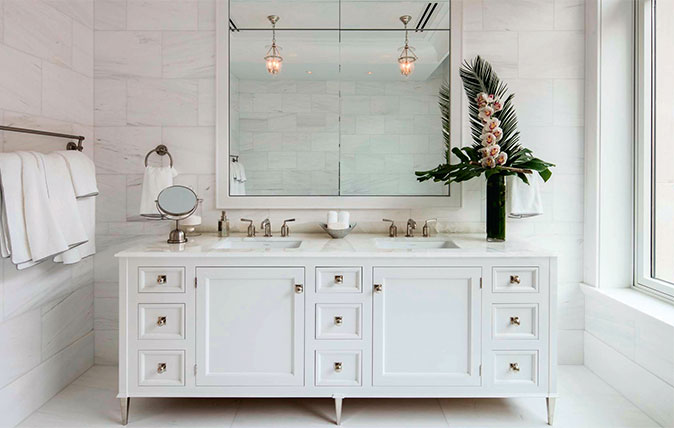
The surprising secret of marital harmony: not two bathrooms, but two basins
Michael Caine swears by separate bathrooms. You don't need to go quite so far, says Giles Kime.

Create your own rural oasis: Five bedroom furniture tips
You don't have to live in the country to have countryside touches in your house, and the bedroom is a
Country Life is unlike any other magazine: the only glossy weekly on the newsstand and the only magazine that has been guest-edited by HRH The King not once, but twice. It is a celebration of modern rural life and all its diverse joys and pleasures — that was first published in Queen Victoria's Diamond Jubilee year. Our eclectic mixture of witty and informative content — from the most up-to-date property news and commentary and a coveted glimpse inside some of the UK's best houses and gardens, to gardening, the arts and interior design, written by experts in their field — still cannot be found in print or online, anywhere else.
-
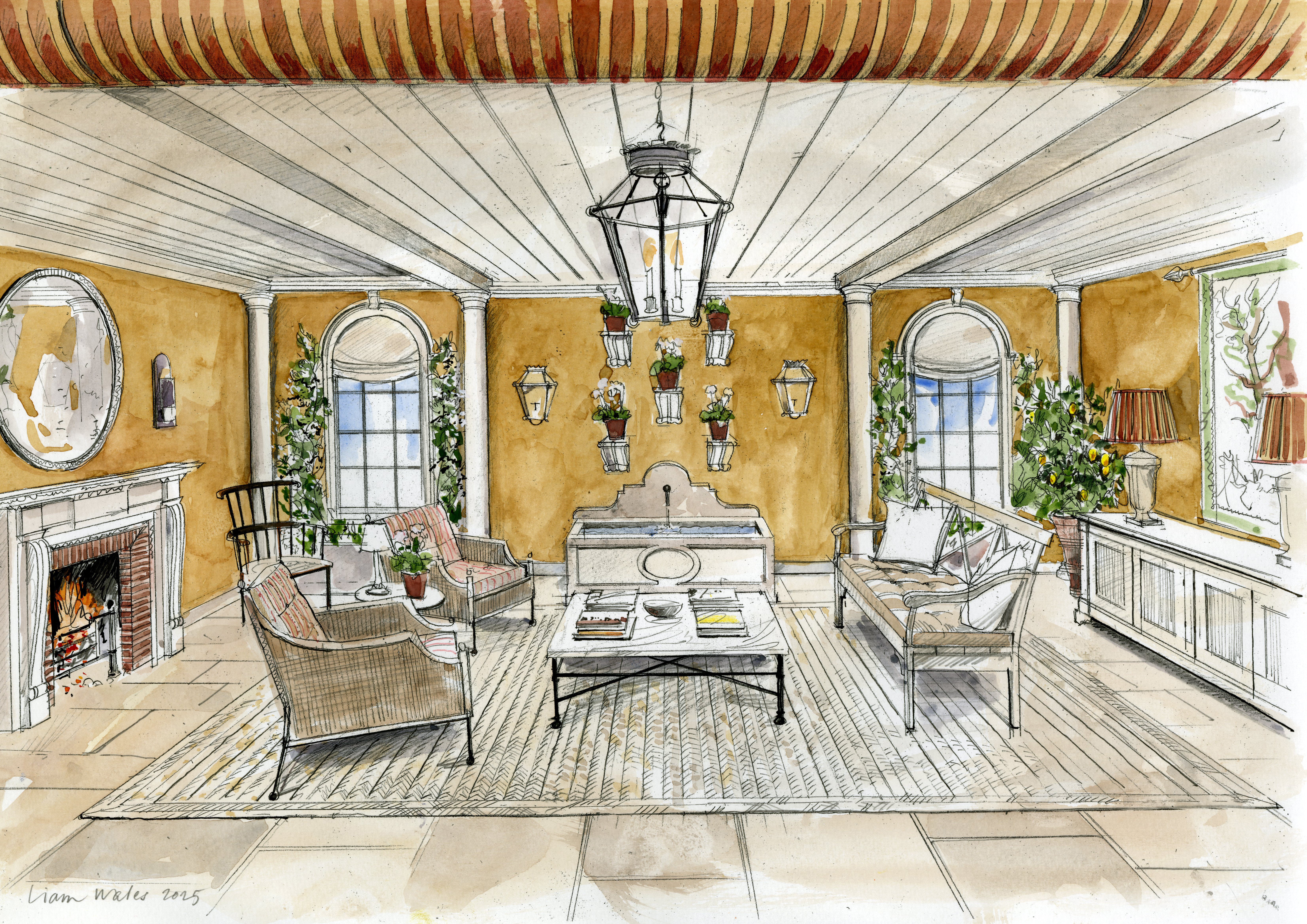 The big reveal: A first look at Country Life's RHS Chelsea Flower Show stand
The big reveal: A first look at Country Life's RHS Chelsea Flower Show standInterior designer Isabella Worsley reveals her plans for Country Life’s ‘outdoor drawing room’ at this year’s RHS Chelsea Flower Show.
By Country Life
-
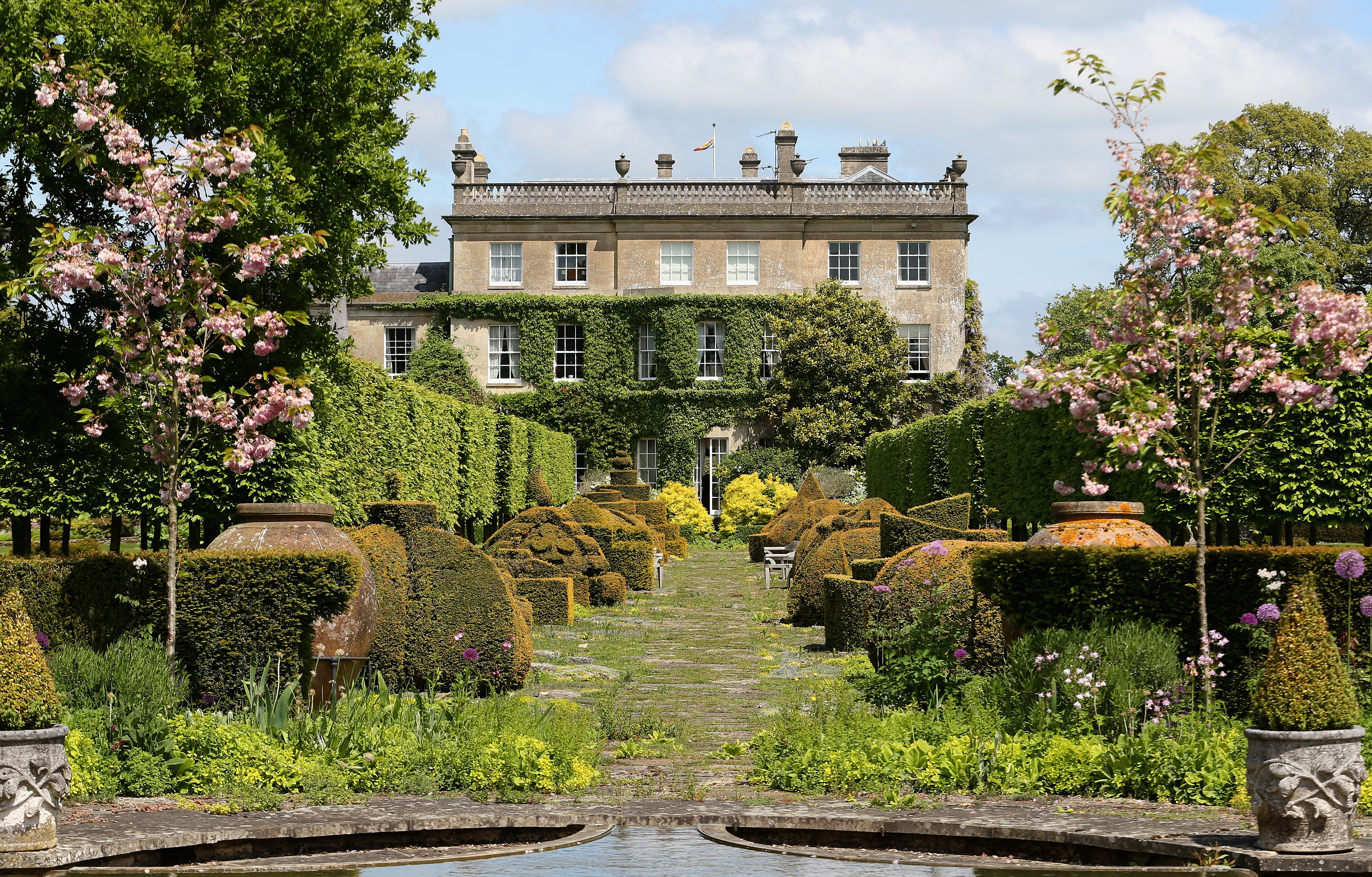 Sanderson's new collection is inspired by The King's pride and joy — his Gloucestershire garden
Sanderson's new collection is inspired by The King's pride and joy — his Gloucestershire gardenDesigners from Sanderson have immersed themselves in The King's garden at Highgrove to create a new collection of fabric and wallpaper which celebrates his long-standing dedication to Nature and biodiversity.
By Arabella Youens
-
 Designer's Room: A solid oak French kitchen that's been cleverly engineered to last
Designer's Room: A solid oak French kitchen that's been cleverly engineered to lastKitchen and joinery specialist Artichoke had several clever tricks to deal with the fact that natural wood expands and contracts.
By Amelia Thorpe
-
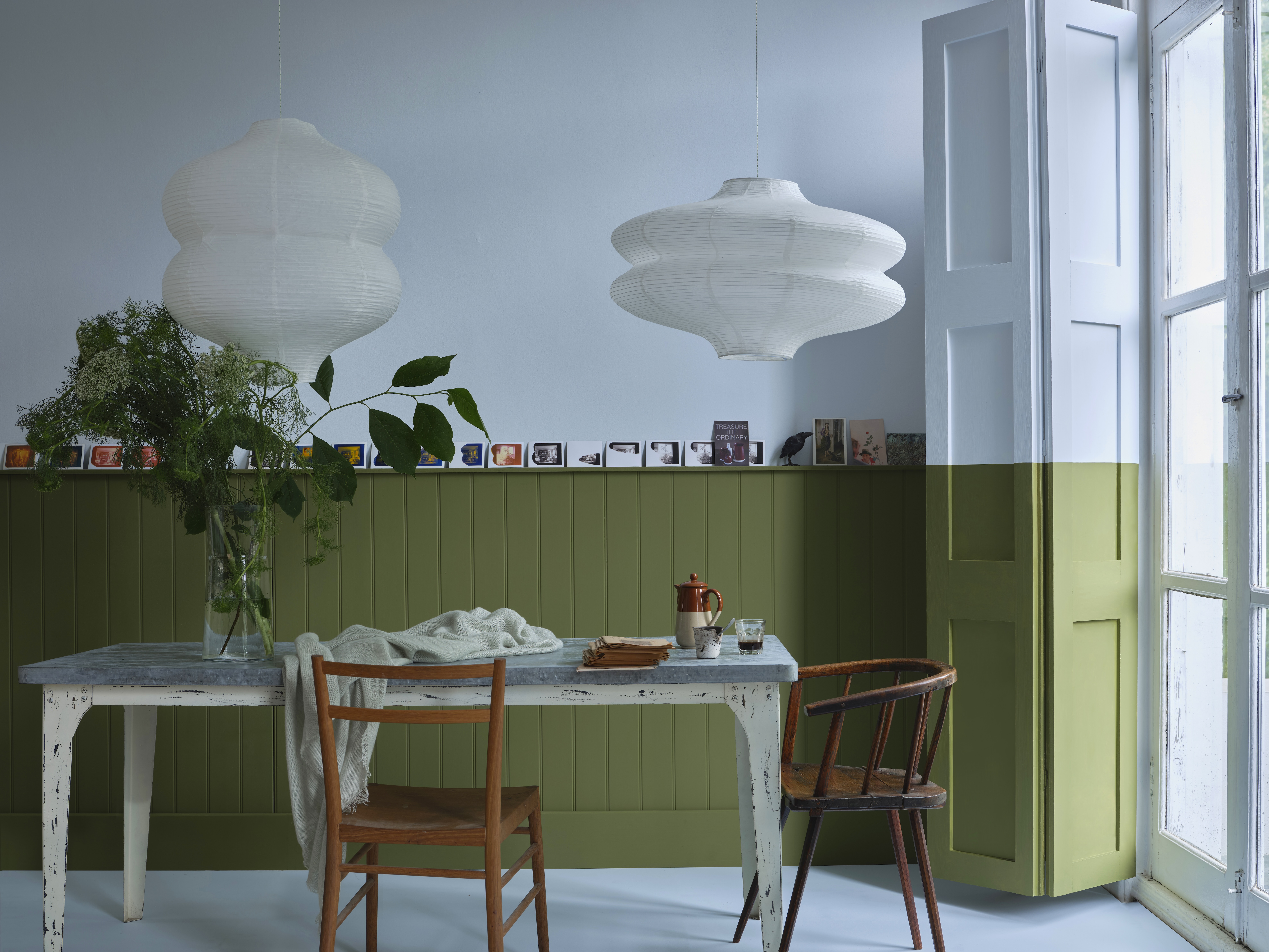 John Sutcliffe — The man, the myth and the paint-naming legend behind Dead Salmon and Elephant's Breath
John Sutcliffe — The man, the myth and the paint-naming legend behind Dead Salmon and Elephant's BreathBy Carla Passino
-
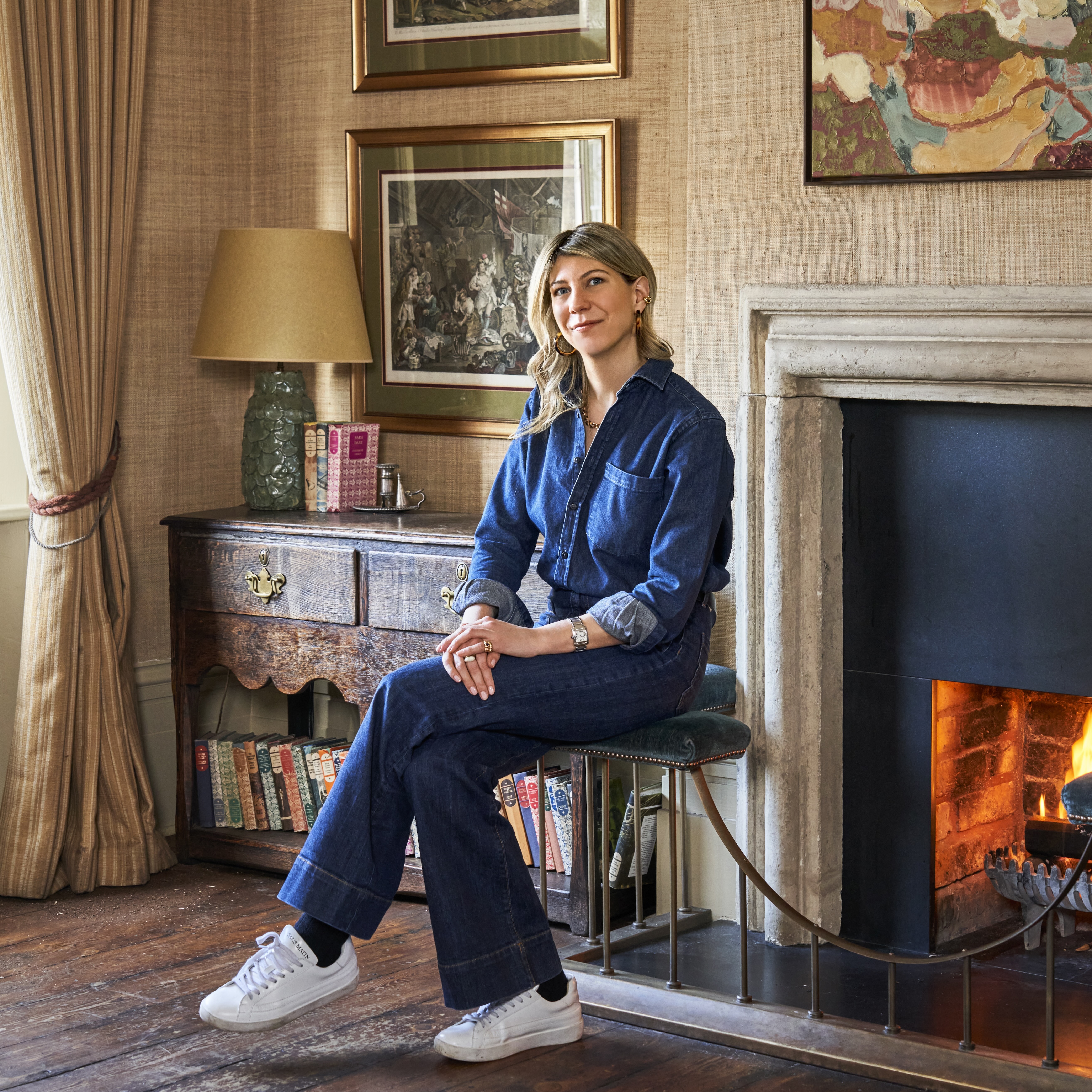 The power of the youthful gaze: A new generation tackles modern day design conundrums
The power of the youthful gaze: A new generation tackles modern day design conundrumsHow is a new generation of interior designers responding to changing lifestyles, proliferating choice, the challenges of sustainability and the tireless demands of social media?
By Arabella Youens
-
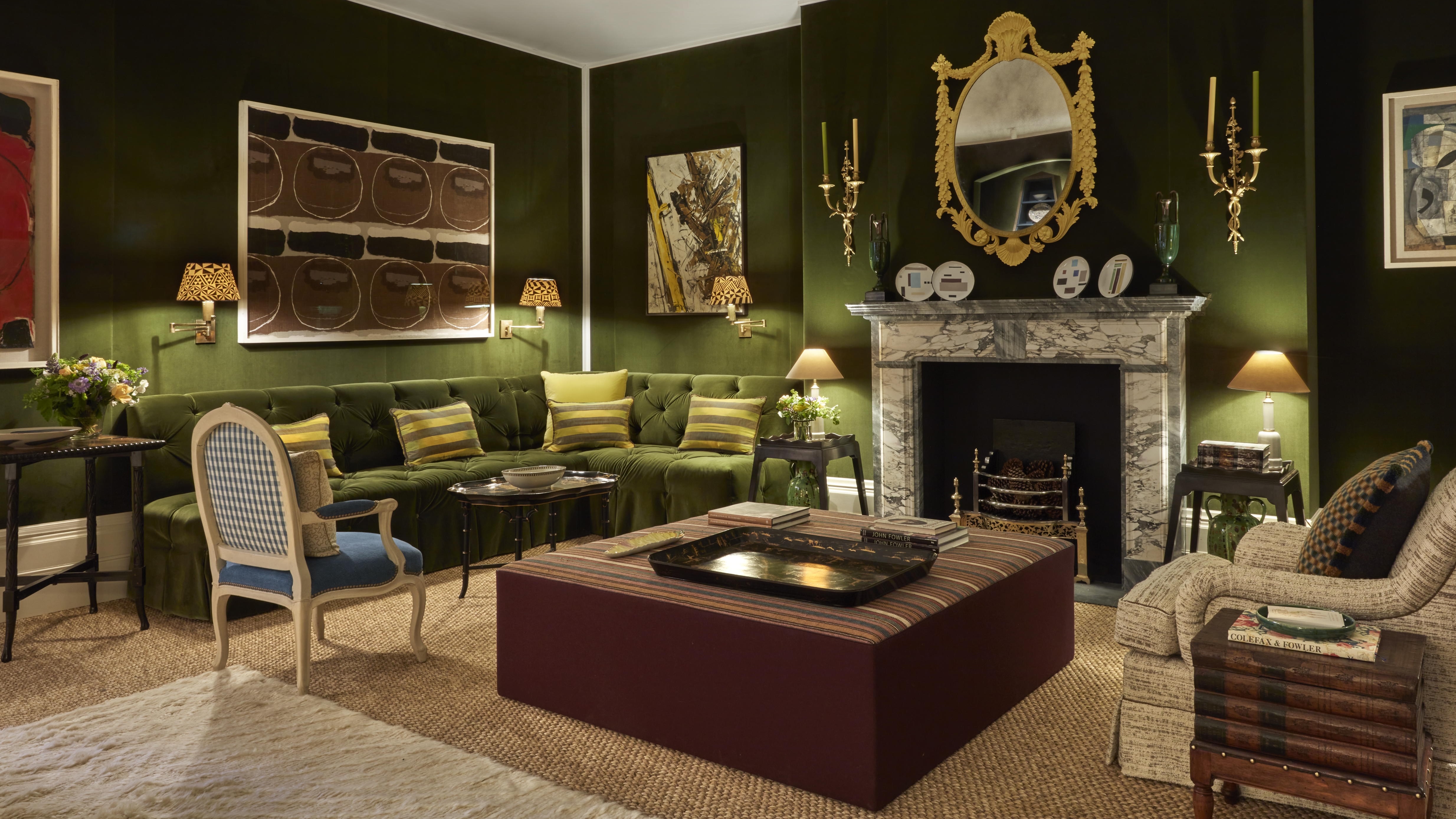 'Rooms can be theatrical and comfortable at the same time': Top tips for decorating with conversation in mind
'Rooms can be theatrical and comfortable at the same time': Top tips for decorating with conversation in mindCarefully placed furniture encourages conversations, says Emma Burns, of Sibyl Colefax & Fowler
By Country Life
-
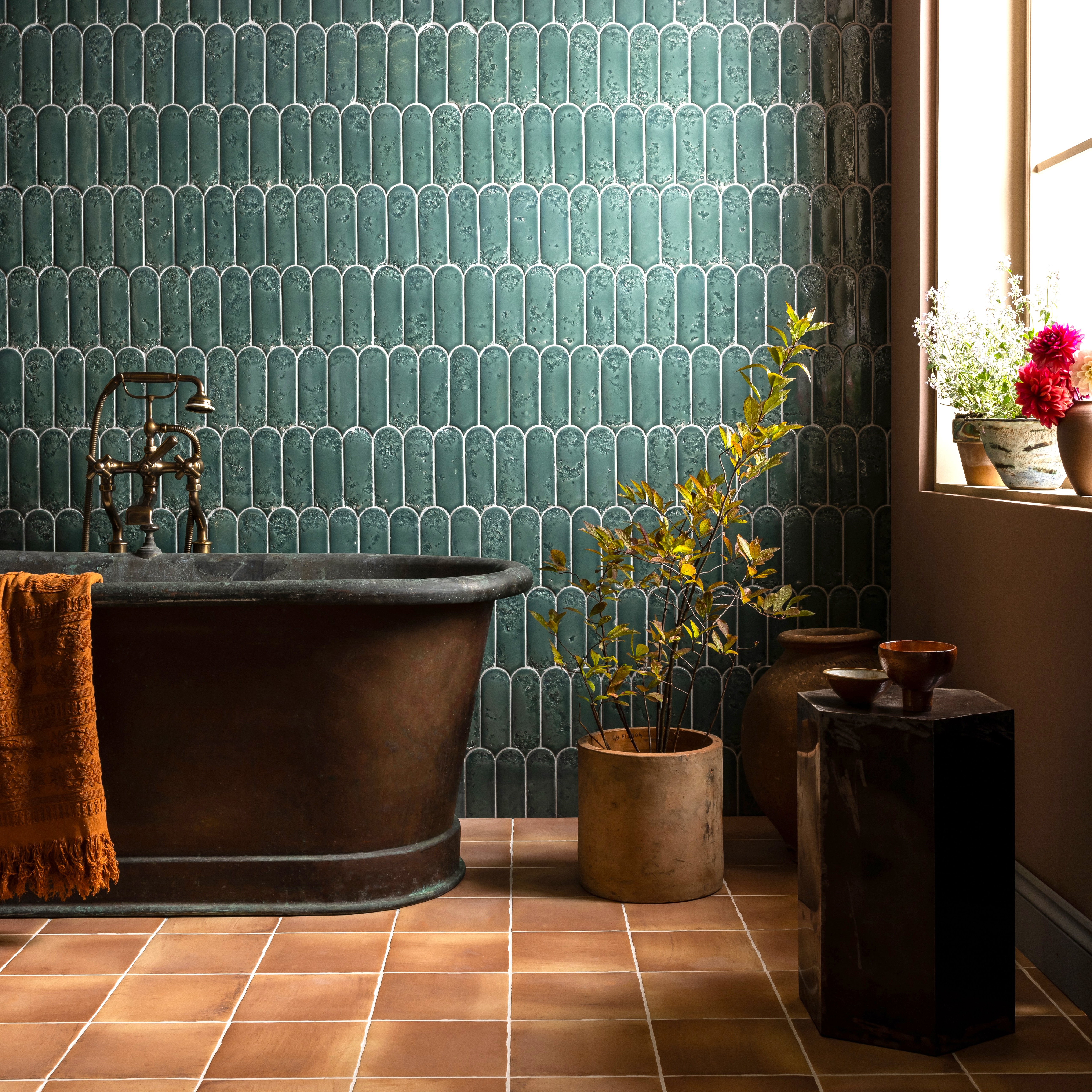 A tub carved from a single block of San Marino marble — and nine more beautiful things for the ultimate bathroom
A tub carved from a single block of San Marino marble — and nine more beautiful things for the ultimate bathroomThere's a bathroom out there for everyone — whatever your preferred style.
By Amelia Thorpe
-
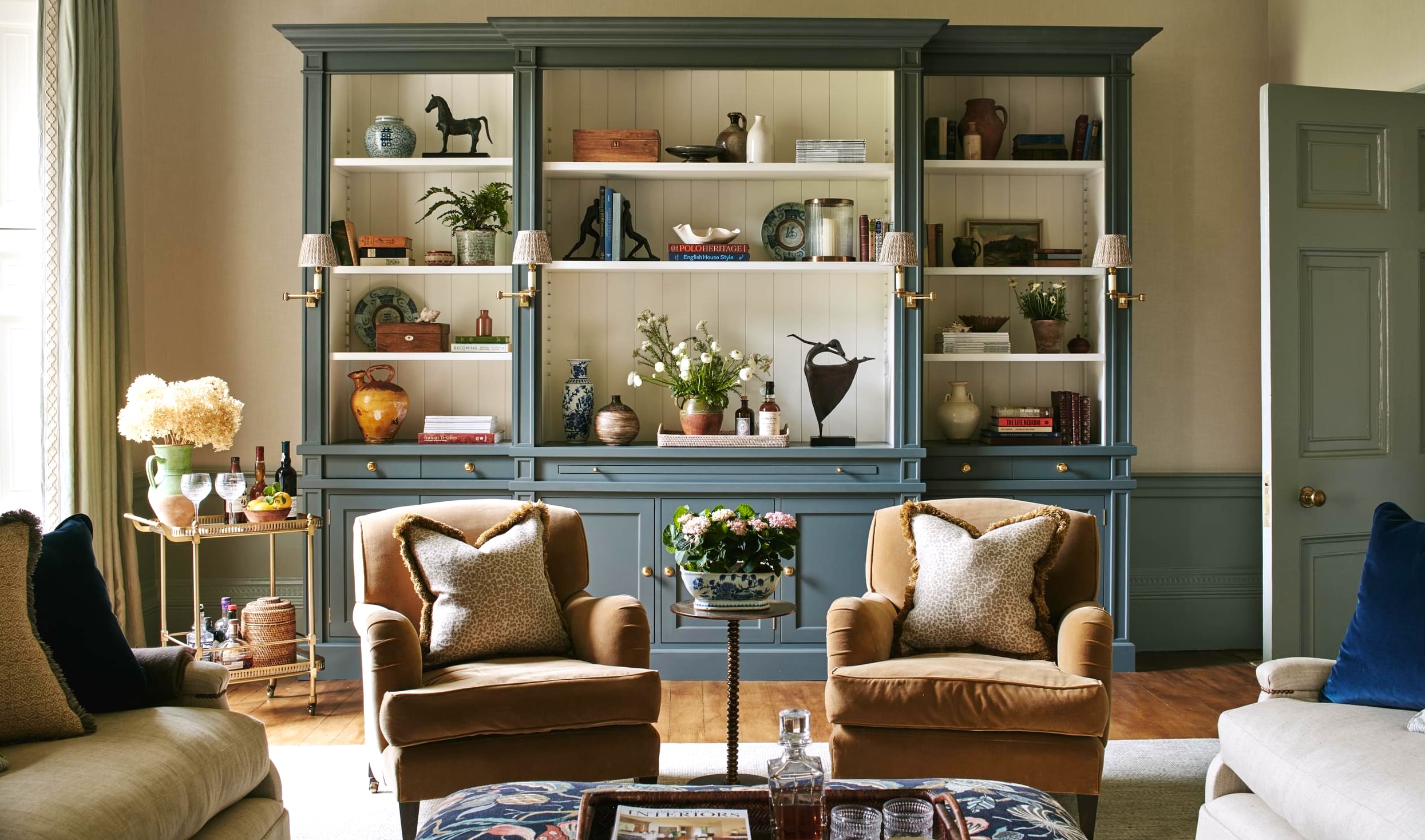 In search of the perfect comfy armchair
In search of the perfect comfy armchairWhat makes the ideal cosy, comfortable armchair? Arabella Youens asks some of Britain's top furniture experts to find out.
By Arabella Youens

